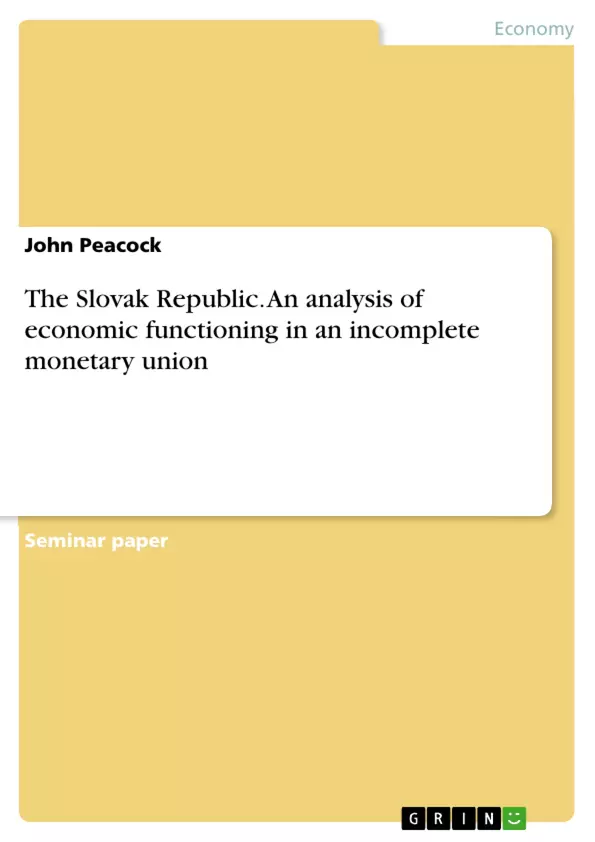An analysis of how and to which extent the Slovak Republic can deal with membership within an incomplete monetary union.
This paper discusses the developments in the Slovak Republic in the context of its membership within a so-called incomplete monetary union, a construct as laid out by De Grauwe in the book "The Economics of Monetary Union".
This paper relies on publicly accessible data and, to a lesser degree, expert literature.
For many comparisons, the author draws comparisons with the Czech Republic due to its similar size, geographic location and economic position, with the key difference being the Czech Republic’s sovereign currency and the resulting means of independent monetary policy. Additional metrics are also compared to the results of the entire Eurozone and to the largest Eurozone economies of Germany and France.
The goal of this paper is to determine to what degree the Slovak Republic benefits from membership within an incomplete monetary union and what steps can or have been taken in order to mitigate the risks of membership.
Inhaltsverzeichnis (Table of Contents)
- Introduction
- Membership in an Incomplete Monetary Union
- Unemployment Rates
- Wages, Labor Unions and Prices
- Government Debt and Deficit
- Current Account Balances
- Openness
- Financial Institutions
- Risk of Default
- Industry Structure
- Conclusion
Zielsetzung und Themenschwerpunkte (Objectives and Key Themes)
This paper investigates the economic performance of the Slovak Republic within the framework of an incomplete monetary union, drawing on data and expert literature. The analysis aims to assess the benefits and risks of Slovakia's membership and explore potential mitigating measures. Comparisons are made with the Czech Republic, Eurozone, Germany, and France.
- Benefits and risks of membership in an incomplete monetary union
- Asymmetries in economic performance between Slovakia and other EU economies
- Impact of labor market flexibility on economic imbalances
- Role of government debt and deficit in economic development
- Analysis of Slovakia's trade openness and current account balances
Zusammenfassung der Kapitel (Chapter Summaries)
- Introduction: This chapter introduces the paper's scope and aims, focusing on the economic performance of Slovakia within an incomplete monetary union. It also establishes the methodological framework, including data sources and comparative analyses.
- Membership in an Incomplete Monetary Union: This chapter provides background information on Slovakia's economic development, highlighting its journey from liberalization to EU and Eurozone membership. It emphasizes the country's openness to trade and the subsequent integration of its economy with other EU member states.
- Unemployment Rates: This chapter examines unemployment rates in Slovakia and compares them to those of the Eurozone, Czech Republic, France, and Germany. It explores the impact of labor mobility on reducing unemployment imbalances and discusses the synchronization of business cycles between Slovakia and the Eurozone.
- Wages, Labor Unions and Prices: This chapter analyzes the flexibility of Slovak labor costs, particularly the willingness of workers to accept wage stagnations or even decreases in periods of economic turmoil. It contrasts this with the labor market rigidity observed in other countries, such as France.
Schlüsselwörter (Keywords)
The paper focuses on key concepts such as incomplete monetary union, economic asymmetries, labor market flexibility, unemployment rates, wage adjustments, government debt, current account balances, trade openness, and economic integration within the European Union.
- Quote paper
- Bachelor of Arts John Peacock (Author), 2017, The Slovak Republic. An analysis of economic functioning in an incomplete monetary union, Munich, GRIN Verlag, https://www.grin.com/document/366625



